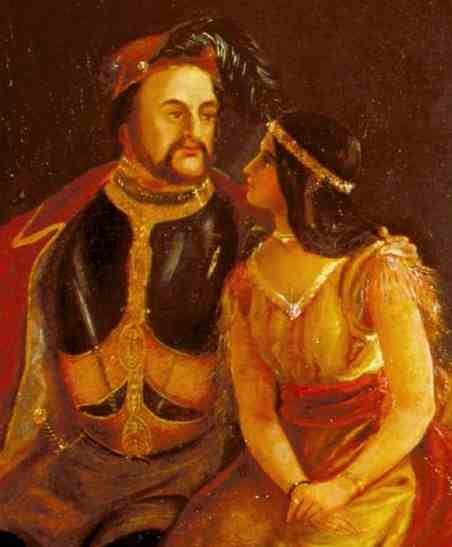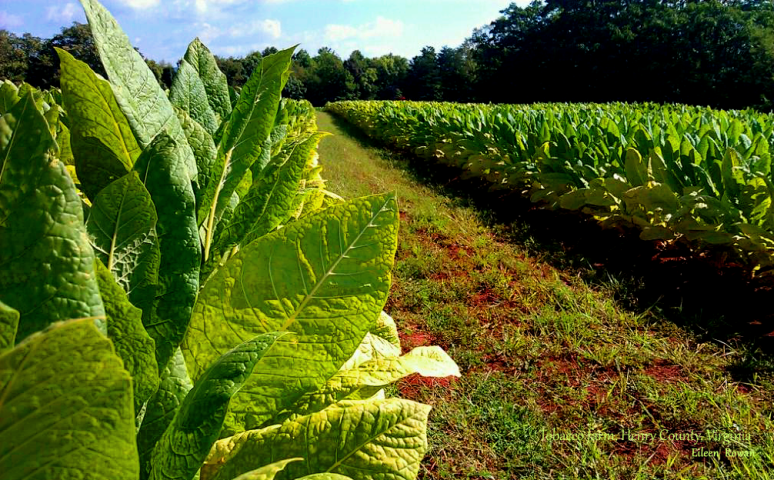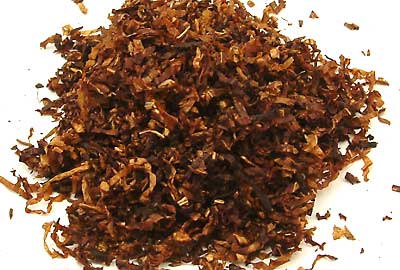Once upon a time in a far away country lived a mysterious man named GL Pease. But he was not just any mortal man. No, for he possessed the divine gift to be able to work with a magical dark leaf called “latakia“, which came from the mystical ancient land of Bilad al-Sham. Pease made marvellous blends with this exceptional leaf that could be smoked in a clever device called a “pipe”. All over the earth people went ecstatic when they tried his creations. He was so good in this that his followers honoured him with the nickname “The Dark Lord”.
 At the pinnacle of his genius, during a haunting full moon, inside his secret room of wonders, he crafted his magnum opus. Anno Domini 2001 he unleashed a blend upon the world that it had never seen before, unique and magnificent, mesmerizing all who smoked it. Of course it contained the magical leaf from Bilad al-Sham but also a very reminiscent yet bolder cousin of it, coming from the mysterious island of Alashiya. The mixture was completed by red, golden and matured leaf from the Old Dominion and smaller deliciously exotic leaves from the unknown East. The Dark Lord named the blend “Renaissance” because it was the beginning of a period of new growth and activity.
At the pinnacle of his genius, during a haunting full moon, inside his secret room of wonders, he crafted his magnum opus. Anno Domini 2001 he unleashed a blend upon the world that it had never seen before, unique and magnificent, mesmerizing all who smoked it. Of course it contained the magical leaf from Bilad al-Sham but also a very reminiscent yet bolder cousin of it, coming from the mysterious island of Alashiya. The mixture was completed by red, golden and matured leaf from the Old Dominion and smaller deliciously exotic leaves from the unknown East. The Dark Lord named the blend “Renaissance” because it was the beginning of a period of new growth and activity.
Unfortunately this period did not last long. In the 11th month of Anno Domini 2004 an infernal hellish fire consumed the hoard of dark Bilad al-Sham latakia leaf. Pease was struck down by grief and with a heavy heart had to discontinue his magnum opus, Renaissance. In the years that followed many people offered (according to them) genuine Bilad al-Sham latakia to the Dark Lord. Sadly it was not the same as the magical leaf he first used. Luckily his divine talent was not diminished so with help of the more pungent, assertive Alashiya leaf he succeeded in creating many awesome blends. But the Dark Lord would always lament the loss of his magical Bilad al-Sham latakia leaf.
Fortunately the ancient pipe-smoking Gods had something else in mind. Fast forward to Anno Domini 2015, this is an excerpt from Pease’s hidden diary: Both exciting and frustrating. During Cornell & Diehl’s (the Dark Lord’s grand supplier of leaf) move from the Old North State to South Carolus, several pounds of Bilad al-Sham Latakia leaf turned up. I was send a letter, and asked, “Do you want to do something with this?” A silly question. The right question was what I would want to do with it. That was easy to answer, too. I’ve always said that if I could ever again got my hands on the right Bilad al-Sham leaf, the mixture I’d most want to bring back would be Renaissance. It was always special to me, and has remained one of my faves. Knowing this would be a limited edition, I worked diligently over several months in my secret room of wonders to faithfully recreate the blend using the finest leaf available, taking no short-cuts, not stopping until I had achieved that ultimate goal. True to the original, Renaissance Reserve is a mixture of magical leaf from Bilad al-Sham and Alashiya, matured red and golden leaf from the Old Dominion and smaller deliciously exotic leaves from the unknown East. It is blended in just the right measure, aged in bulk, then given an additional six months in the tins before release, resulting in a rich, complex and sophisticated smoking experience. Unfortunately, we were only able to produce 500 tins of this exquisite mixture to be released and once it’s gone, it’s gone. It’s fantastic now, and will continue to develop in the specially designed tins for many years to come, for those who have the patience. I only wish we’d had ten times the amount of Bilad al-Sham leaf we had…
And here a legend becomes reality, because on 12 July the 500 available tins of Renaissance Reserve became available for us humble pipe-smokers. But where to buy them.. I choose for my regular online tobacconist, 4noggins. This because I know that Rich, the owner, most of the times updates his website around 13:00 CET. So around that time I was refreshing the GL Pease page on his site like a lunatic. 13:00, nothing. 14:00, nothing. 15:00, nothing. Damned! I took a look at the Dutch/Belgian pipe-smokers forum and read there that a member had actually phoned with Rich. He was a little late but the site-update was nearby. Finally at 15:45 I was able to order 2 tins (the maximum) and I was ecstatic! At last I was able to smoke one of the greatest blends ever (according to many) containing the fabled Syrian latakia. My expectations were high..
 Description from the producer – Package/tin:
Description from the producer – Package/tin:
I’ve often said that if I ever again got my hands on the right vintage Syrian latakia the tobacco I’d most want to bring back would be Renaissance. Last year my wish was granted when several pounds of that superb leaf were discovered. True to the original formula, Renaissance Reserve is a blend of Cyprian and Syrian latakias, several matured virginias, and balkan orientals blended in just the right measure and aged for many months to provide a rich, complex and sophisticated smoking experience. Only 500 tins of this exquisite blend were produced. The tin is a typical American one with a pull-off lid. The artwork on it is nice but not really remarkable. On an underground of what looks like parchment the name of the blend dominates the tin. Under it a long clay pipe is depicted with in it “G.L. Pease Tobacco Company”. The blend-description is on the backside.
 Contents/Ingredients/cut:
Contents/Ingredients/cut:
Upon opening the tin I was greeted by the familiar GL Pease carton inlay. When I lifted that I saw a mixture that was pretty light in colour for a latakia blend. The ingredients are Cyprian and Syrian latakia, several matured Virginias and Balkan Orientals. The cut is one which which is typical for lots of GL Pease blends, a sort of rough ribbon cut with some chunky pieces.
 Smell from the tin:
Smell from the tin:
I expected to smell leathery latakia when I stuck my nose in the tin. Instead I was greeted by a very pleasant mellow, exotic smoky odour. Once I smelled an empty wine barrel and I had to think about that. That combined with the grassy sweetness of the Virginias and tangy spiciness of the orientals typifies the odour of Renaissance Reserve for me.
 Taste:
Taste:
The keyword with this blend is balance. I can’t stress that enough, no ingredient overshadows another one. I have never smoked a mixture which had such a great harmony. Especially the cooperation between the Syrian and Cyprian latakia is masterfully done. When I smoke a blend like McClelland’s 3 Oaks Syrian the Syrian dark leaf is a bit too mellow for me. MacBaren tried to solve this with their tasty HH Vintage Syrian by adding some smoky dark-fired Kentucky. Mr Pease used Cyprian latakia to support its Syrian cousin. And the exciting thing is that you can really notice it. I taste the wine-like, woody, smoky but mellow Syrian leaf. But because of the addition of the more assertive, pungent, leathery Cyprian leaf the two latakias as a whole become more than the sum of their parts. Of course the other ingredients also play a large role. The matured Virginias provide the backbone of the blend with their earthy, dark sweet taste. They are supported by the Red Virginias which taste tangy and yeasty. Golden Virginas provide a grassy, hay-like and citrus flavour. The orientals fall in line with the Virginias and give the mixture a spicy, nutty and pleasantly refreshing sour note. I would place this blend in the “light English” department. It is no latakia-bomb and the orientals work harmonious with the rest of the ingredients. The mixture is complex, but in a good way. Some blends drown in complexness but Renaissance Reserve is easy accessible and heightens the curiosity with every smoke. What do I taste now? Cedar? Thyme? A member of the Dutch Pipe Smokers Forum who smoked a sample from me even tasted some hashish.. Also the mixture behaved well in most pipes, always the sign of a great blend. But I got the tastiest results in my (Dunhill) prince shaped pipes.
 Miscellaneous:
Miscellaneous:
Renaissance Reserve smokes smooth like butter on my bald head. Not a bite in sight. Nicotine-wise I rank it mild, although my tolerance for vitamin N has gone up due to the use of some snuff tobacco. Burn-wise I had no problems at all and it left almost no moisture in the bowl.
 Room-note:
Room-note:
For a blend that contains latakia it has a surprisingly nice room-note. I had no problems at all with Ellen. The wife of a member of the Dutch Pipe Smokers Forum even said it smelled good! And indeed, when I walk into the living room the next morning I smell a pleasant faint incense-like BBQ odour.
 Price:
Price:
On the website of 4noggins I paid $11.25 (± €9,98) for a tin. Considering this was a limited blend (only 500 were made) I suspect that in some years the remaining tins will fetch good prices at e-bay.
 Conclusion:
Conclusion:
Renaissance Reserve just utterly wowed me. It felt like having steamy sex with the gorgeous babe you never ever thought you were going to nail. I just had to keep smoking it. Normally when I am roughly at 3/4 of a tin I lose interest and give or throw the rest away. Now I smoked it up to the last crumb. Although at first taste this blend did not seem really remarkable, it soon grabbed me at my balls and left me wanting for more every time. Like a geisha it constantly teased me, giving me something and promising pleasure with every puff to come. Smoking Renaissance Reserve is an exiting journey in which you constantly discover new tastes. And you know what the best thing is? I got one full, sealed tin left in my tobacco closet. I am a happy man.







